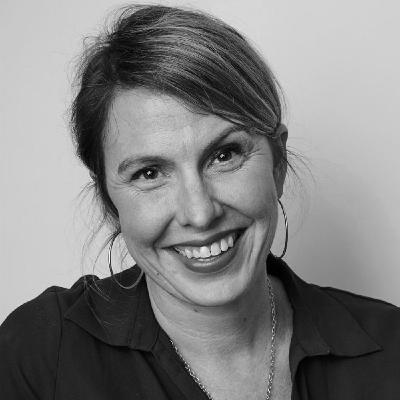56: Design’s Role in the Evolution of Product Management (ft. Sara Beckman)
Description
Transcript
Jesse: Hey everybody, it’s Jesse James Garrett here. I wanted to let you know before we get into the show, we’ve got a special event coming up this week on Friday, March 28th, we are celebrating the 25th anniversary of the elements of user experience with a live 90 minute virtual seminar at 8:00 AM Pacific, 11:00 AM Eastern.
I will be talking about the elements of UX in the age of AI. We’ll be looking at the connections between the history of user experience design, and the future of artificial intelligence. You do not wanna miss it. Peter Merholz will be there conducting live q and a. So please join us on Friday, March 28th.
Get your tickets now at jessejamesgarrett.com. Stay tuned for another special announcement at the end of this show, but now on with the show.
I’m Jesse James Garrett,
Peter: and I’m Peter Merholz.
Jesse: And we’re finding our way,
Peter: Navigating the opportunities
Jesse: and challenges
Peter: of design and design leadership,
Jesse: Welcome to the next phase. Joining us today to talk about what’s next for design is Dr. Sara Beckman, Professor at Berkeley’s Haas School of Business and longtime observer and commentator of the dynamic between design and business. We’ll be talking more about the legacy and impact, for better or worse, of design thinking, how design leaders should talk about metrics and how they shouldn’t, and what she’s learning from educating the next generation of product managers.
Peter: Hi, Sara. Thank you so much for joining us.
Sara: It’s a pleasure to be here, Peter.
Peter: To start off, while I’ve known you for over 20 years, our audience doesn’t. And so I’m curious how you introduce yourself these days.
Sara: It’s always a good question. I’m on the faculty at the business school at UC Berkeley, where I have, for multiple decades now, been teaching topics in design, innovation, product development, product management et cetera. I kind of hang out between two worlds there, between the College of Engineering and the business school.
I was involved in starting up the Jacobs Institute of Design Innovation. So a lot of focus, I guess, broadly speaking, on cross-disciplinary work in the university, particularly as it relates to design. The ability to create new stuff, I guess.
The Intersection of Business and Design
Peter: Excellent. I’m going to dive right in to something I was thinking about literally yesterday, where I was attending a session, it was a webinar given by a design leader talking about the intersection, wait for it, of business and design…
Jesse: ooh,
Peter: And how it’s important for designers to understand, and to be able to speak in terms of metrics and stuff like that.
And as he was talking, I was reflecting on work we did together over 20 years ago. So for Adaptive Path, you were kind of an advisor when we did a report on, at the time we called it, like, the working title was The ROI of UX, the official publication title is Leveraging Business Value: How ROI Changes User Experience. And the question I have is, why is it 20 years later we’re having the same conversation about how you connect design and business? Why doesn’t it feel like it has progressed? ,
Sara: Well, can I say something maybe a little provocative and say,
Peter: Yes!
Sara: Design Thinking got in the way.
Jesse: mm-hmm
Sara: So, 20 years ago, we were talking about, I’m going to call it real design. So, whether it’s UX designers, industrial designers, graphic designers, there was work that they did that we were trying to put value on. We were trying to say, if I make this product more usable, I can sell more of it, for example. So how do I make a connection between the deep work that designers are trained to do in design school, and the outcomes I can achieve with a product or service in the marketplace?
Design thinking came along, and, in my opinion, it trivialized the work of real designers, I’ll call them, and we said everybody can do design and we had all these things going on that we turned design into, frankly, to some extent, soundbites.
Oh, go talk to a customer and then design something cool and new. Nothing wrong with going to go talk to a customer. We kind of skip over a lot in design thinking the idea of actually getting insights out of talking to real customers and then designing to those insights.
I’m put in mind of Barry Katz’ book on the history of design in Silicon Valley and how it evolved. First, started at Hewlett Packard, where I happened to work way back when, as really usability or user interface, right, design.
And then as we moved into wrapping services around things, as we moved into software being the core of the delivery of capability, we migrated what design did, but design thinking was a whole different thing.
And so was looking through your recent interview with Roger Martin and, thinking about what is design thinking relative to what design was about. Sometimes they call them little d and big D design. That implies one is bigger, better than the other. But we used to do that in manufacturing. It was big M manufacturing, which we thought of as manufacturing strategy and sort of the wrapper that went around manufacturing. And I think that was different than the actual execution of manufacturing processes.
Somehow de-linked with design thinking, sort of the big D design stuff, we de-linked it from the actual actions of real designers. And that’s part of why people like Lucy Kimball talk about designerly thinking, as opposed to design thinking, because design thinking was a broader mindset and it left behind some of the roll-up-your-sleeves, we have real work to do here, because it made it seem like I could just draw a journey map and then design something, or I could just brainstorm for a bit, diverge, converge, and come up with something. No design process is that easy, right? I mean, you both know this from…
Jesse: Right. Yeah.
Sara: And so we left all that behind. Well, what’s the ROI of design thinking? First of all, nobody even knew what it was, right. I mean, you look at the academic literature on design thinking. I always felt like this was a bit of a tautological. Oh, well, let me go study companies that say they do design thinking and then I’ll define design thinking and then sort of over time we defined this thing called design thinking, but then next thing you know, design thinking isn’t just design.
Oh, it’s also teaming. Oh, so design thinking is going to resolve all the teaming challenges. Like we, it just kept getting bigger and bigger without an anchor around what is this thing. It became bigger and undefined, but we also lost track of… design thinking, which is different than the practice of design, is not the only way to frame and solve a problem.
And Roger talked about, well, scientific method is another way to frame and solve problems. Critical thinking is another way to frame and solve problems. Total quality management or DMAIC or Six Sigma, whatever you wanted to package all that stuff in, that was another way to frame and solve problems. Systems thinking is another way to frame and solve problems.
And the design thinking proponents came along and said, this is the way to frame and solve problems. And it became, therefore, a fad, right? Because, because you can’t say there’s only one way to frame and solve problems. This is one of my great frustrations, honestly.
So that’s what led me to the model that I’ve been using almost 20 years now, which is this experiential learning based model that basically says problem framing and solving is a process of sense making, toggling between the concrete and the abstract world, observing and noticing, framing and reframing the problem, and solution making, agains toggling between concrete and abstract worlds.
Sara: I have a great idea in my head. I go try it out. I can put all of those other problem framing and solving methods into that model, which then led me to say, well, then shouldn’t we be teaching students, at a generic level, the core capabilities of problem framing and solving, and then have them say, ah, this problem could use scientific method approaches. It’s hypothesis-driven, right? I observe customers or users and I create a hypothesis about a problem they have. And then I go test that hypothesis by playing around with different solutions and prototypes. Scientists observe nature, maybe. We observe people in the design world, but they’re observing something and then forming a question about how it could be different.
So, Sal Khan, in his book, One World Schoolhouse, his last chapter says, What if the university were a place in Silicon Valley that companies threw problems into and kids solved them for four years? And it took me a while to really kind of digest that notion, but I think, and by the way, it doesn’t have to be in Silicon Valley, and it doesn’t have to be corporate problems, but a general notion that education would really be about iteratively framing and solving problems of different types























